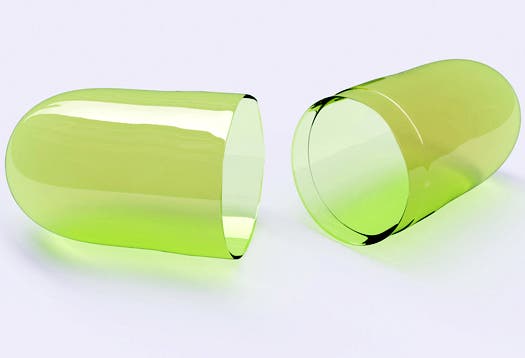
The reason why some drugs can only be taken by injecting them, instead of less intrusive solutions like oral ingestion, is because otherwise these drugs can not reach the bloodstream effectively. For people suffering from chronic diseases that require a lifetime treatment of drugs administered by injection, like those suffering from diabetes who need an insulin shot every other day, this can be most cumbersome to say the least. Bioengineers at Brown University, however, have developed a novel adhesive coating that can protect proteins like insulin on their way through the stomach to the small intestine where they can be effectively absorbed. Initial results have so far been extremely promising.
For years scientists have been trying to develop ways of delivering protein-based drugs safely through the stomach to the small intestine where they can be absorbed and distributed by the bloodstream. Progress has been slow in this direction, but recently Brown University researchers led by Edith Mathiowitz, professor of medical science at Brown University, reported they have developed a “bioadhesive” coating that significantly increased the intestinal uptake of polymer nanoparticles in rats and that the nanoparticles were delivered to tissues around the body in a way that could potentially be controlled.
“The results of these studies provide strong support for the use of bioadhesive polymers to enhance nano- and microparticle uptake from the small intestine for oral drug delivery,” wrote the researchers in the Journal of Controlled Release, led by corresponding author Edith Mathiowitz, professor of medical science at Brown University.
Adhesion/Absorption of protein-based drugs
The promising coating in question is a chemical called PBMAD. This chemical was subjected to tests both in the lab and on animal models to verify its potential as a protective coating for protein-based drugs. The experiments were made using particles about 500 nanometers in diameter made of two different materials: polystyrene, which adheres pretty well to the intestine’s mucosal lining, and another plastic called PMMA, that does not. The PMMA plastic was most interesting to follow, so in their experiments the Brown researchers used the particle under two scenarios: bare and coated.
[RELATED] Type 1 diabetes cured in animals, humans might lag far behind
Basic benchtop tests were performed to see how well each kind of particles adhered, and it was found PBMAD-coated had the strongest adherence to intestinal tissue, binding more than twice as strongly as the uncoated PMMA particles and about 1.5 times as strongly as the polystyrene particles. In the second part of the experiments, various doses of each type of particle were injected into the intestines of lab rats. Measurements showed that the rats absorbed 66.9 percent of the PBMAD-coated particles, 45.8 percent of the polystyrene particles and only 1.9 percent of the uncoated PMMA partcles.
Controlling the drugs
What’s maybe even more important to note is that each particle had its own unique distribution profiles around the body. For instance, 80 percent of the polystyrene particles that were absorbed went to the liver and another 10 percent went to the kidneys. The PBMAD-coated particles on the other hand were much more likely to reach the heart, while the uncoated ones were much more likely to reach the brain. What this means is that researchers can control where and how protein-based drugs reach specific parts of the body, essentially targeting doses of medicines taken orally, Mathiowitz said.
“The distribution in the body can be somehow controlled with the type of polymer that you use,” she said.
The whole idea is that protein-based medicines would be carried in the nanoparticles, however more work is required to demonstrate actual delivery of protein-based medicines in sufficient quantity to tissues where they are needed. For now, Mathiowitz and her team are busy understanding the biophysics of how the PBMAD-coated particles are taken up by the intestines.
“What this means now is that if I coat bioerodible nanoparticles correctly, I can enhance their uptake,” she said. “Bioerodible nanoparticles are what we would ultimately like to use to deliver proteins. The question we address in this paper is how much can we deliver. The numbers we saw make the goal more feasible.”
source: Brown Uni
Was this helpful?



